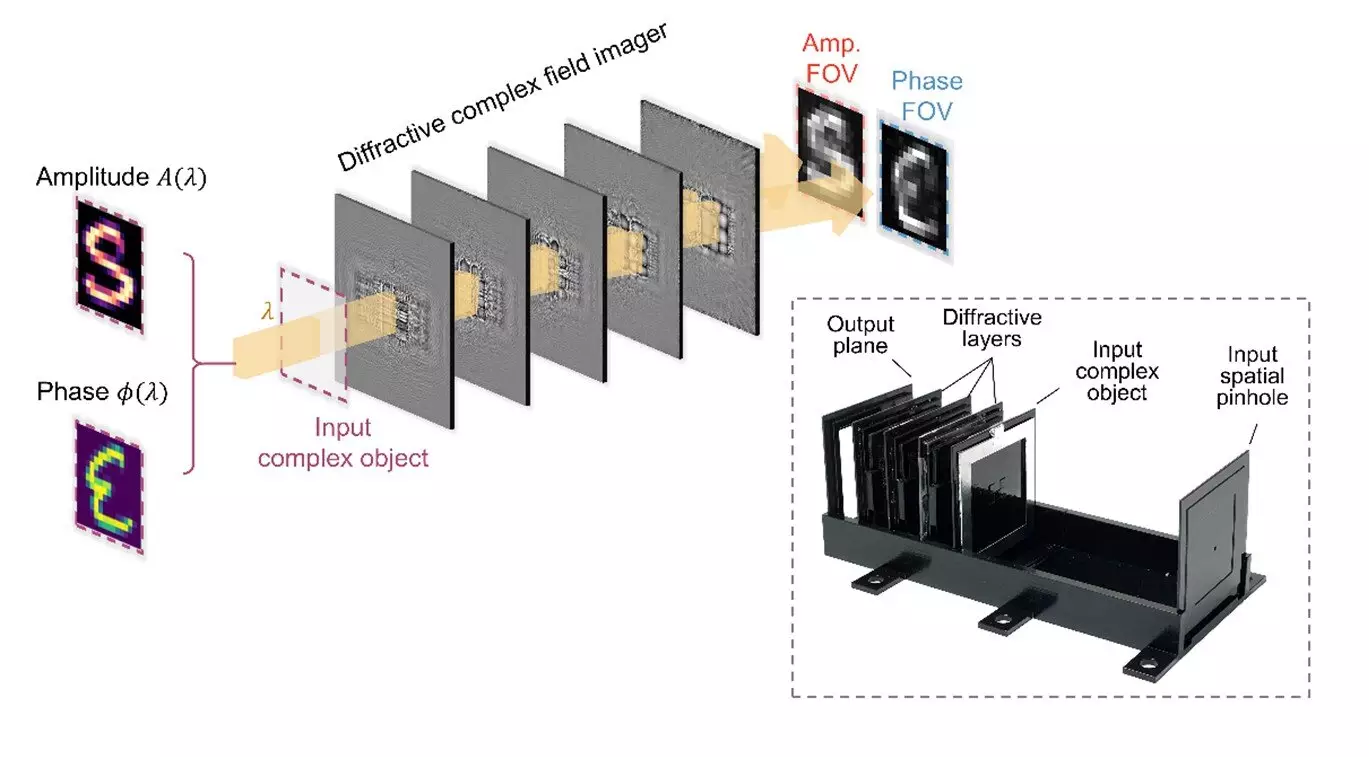

In a groundbreaking development, researchers at the University of California, Los Angeles (UCLA) have made significant strides in the field of optical imaging technology. The creation of an all-optical complex field imager marks a pivotal moment in the realm of imaging devices. This innovative technology has the ability to capture both amplitude and phase information of optical fields without the need for digital processing, promising to revolutionize an array of industries such as biomedical imaging, security, sensing, and material science.
Traditional optical imaging methods have long been limited by their reliance on intensity-based sensors that can only capture the amplitude of light, neglecting crucial phase information. Phase information plays a vital role in understanding structural properties like absorption and refractive index distributions, which are essential for detailed sample analysis. Current techniques for capturing phase information involve complex interferometric or holographic systems combined with iterative phase retrieval algorithms, resulting in heightened hardware complexity and computational demands.
Led by Professor Aydogan Ozcan, the research team at UCLA has developed a novel complex field imager that breaks free from these limitations. This groundbreaking device leverages deep learning-optimized diffractive surfaces to modulate incoming complex fields, creating two independent imaging channels that convert the amplitude and phase of input fields into intensity distributions on the sensor plane. By utilizing this innovative approach, the need for digital reconstruction algorithms is eliminated, streamlining the imaging process significantly.
The complex field imager comprises spatially engineered diffractive surfaces arranged to perform amplitude-to-amplitude and phase-to-intensity transformations. These transformations enable the device to directly measure the amplitude and phase profiles of input complex fields. Despite its compact optical design spanning around 100 wavelengths axially, the imager is highly integrable into existing optical systems. The team validated their designs through 3D-printed prototypes operating in the terahertz spectrum, demonstrating a high level of accuracy with output images closely matching numerical simulations.
The implications of this breakthrough technology are far-reaching, with applications spanning across multiple industries. In the biomedical sector, the complex field imager can facilitate real-time, non-invasive imaging of tissues and cells, providing critical insights during medical procedures. Its compact design makes it ideal for integration into endoscopic devices and miniature microscopes, potentially advancing point-of-care diagnostics and intraoperative imaging. Additionally, in environmental monitoring, the imager can empower the development of portable lab-on-a-chip sensors for rapid detection of microorganisms and pollutants, streamlining the process of environmental assessment.
The versatility of the complex field imager extends to industrial settings, where it can expedite the inspection of materials. Its ability to capture detailed structural information without the need for bulky equipment or extensive computational resources positions it as a valuable asset in quality control and material analysis. This technology has the potential to revolutionize industrial processes by providing a swift and efficient means of assessing materials for various applications.
The advent of the all-optical complex field imager represents a monumental advancement in optical imaging technology. By enabling the direct capture of amplitude and phase information without digital processing, this cutting-edge technology simplifies the imaging process and broadens the scope of potential applications. As the research team continues to refine and enhance their designs, the impact of this innovation is expected to grow, paving the way for new opportunities in scientific research and practical applications across diverse fields.
In the realm of software development, the ability to swiftly and accurately address bugs is…
The realm of quantum computing and communication is not just an abstract dream anymore; it…
In a remarkable leap for the field of material science, a collaborative research initiative has…
Throughout Earth's vast history, our planet has endured five major mass extinction events that reshaped…
Rainfall is a vital element of our planet’s hydrological cycle, yet many aspects of its…
On a night when the universe aligns, a mesmerizing phenomenon awaits: the appearance of the…
This website uses cookies.